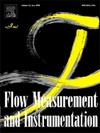基于电阻层析的CNN固相分数预测,样本不准确
IF 2.3
3区 工程技术
Q2 ENGINEERING, MECHANICAL
引用次数: 0
摘要
电阻层析成像(ERT)在固液两相流测量中面临着严峻的挑战,特别是在泥浆监测中,由于泥浆电导率不确定和工作周期不稳定,导致样品不可靠。本文提出了一种混合数据模型框架,以增强基于ert的固相分数(SPF)预测。首先,基于核的动态时间规整(DTW)相似性度量对时间序列ERT数据进行分割,通过结合边界距离和邻域密度的双线性加权平均(DWLA)实现有效样本识别的高精度。其次,一个双向长/短时记忆(BiLSTM)网络取代传统的cnn来捕捉电导率波动的时间依赖性,整合来自麦克斯韦方程的物理约束。实验结果表明,该方法在精度和稳定性方面都有显著提高。提出的DWLA-BiLSTM框架为复杂流模式下的工业应用提供了系统的解决方案。本文章由计算机程序翻译,如有差异,请以英文原文为准。
Electrical resistance tomography-based prediction for solid phase fraction by CNN with inaccurate samples
Electrical resistance tomography (ERT) faces critical challenges in solid-liquid two-phase flow measurement, particularly in mud monitoring, due to unreliable samples caused by uncertain mud conductivity and nonstationary working cycles. This paper proposes a hybrid data-model framework to enhance ERT-based solid-phase fraction (SPF) prediction. First, a kernel-based similarity metric with dynamic time warping (DTW) partitions time-series ERT data, achieving high accuracy in valid sample identification through double-linear weighting averaging (DWLA) that incorporates boundary distance and neighborhood density. Second, a bidirectional long/short-term memory (BiLSTM) network replaces conventional CNNs to capture temporal dependencies in conductivity fluctuations, integrating physical constraints from Maxwell's equations. Experimental results demonstrate significant improvements in both accuracy and stability. The proposed DWLA-BiLSTM framework provides a systematic solution for industry application under complex flow patterns.
求助全文
通过发布文献求助,成功后即可免费获取论文全文。
去求助
来源期刊

Flow Measurement and Instrumentation
工程技术-工程:机械
CiteScore
4.30
自引率
13.60%
发文量
123
审稿时长
6 months
期刊介绍:
Flow Measurement and Instrumentation is dedicated to disseminating the latest research results on all aspects of flow measurement, in both closed conduits and open channels. The design of flow measurement systems involves a wide variety of multidisciplinary activities including modelling the flow sensor, the fluid flow and the sensor/fluid interactions through the use of computation techniques; the development of advanced transducer systems and their associated signal processing and the laboratory and field assessment of the overall system under ideal and disturbed conditions.
FMI is the essential forum for critical information exchange, and contributions are particularly encouraged in the following areas of interest:
Modelling: the application of mathematical and computational modelling to the interaction of fluid dynamics with flowmeters, including flowmeter behaviour, improved flowmeter design and installation problems. Application of CAD/CAE techniques to flowmeter modelling are eligible.
Design and development: the detailed design of the flowmeter head and/or signal processing aspects of novel flowmeters. Emphasis is given to papers identifying new sensor configurations, multisensor flow measurement systems, non-intrusive flow metering techniques and the application of microelectronic techniques in smart or intelligent systems.
Calibration techniques: including descriptions of new or existing calibration facilities and techniques, calibration data from different flowmeter types, and calibration intercomparison data from different laboratories.
Installation effect data: dealing with the effects of non-ideal flow conditions on flowmeters. Papers combining a theoretical understanding of flowmeter behaviour with experimental work are particularly welcome.
 求助内容:
求助内容: 应助结果提醒方式:
应助结果提醒方式:


